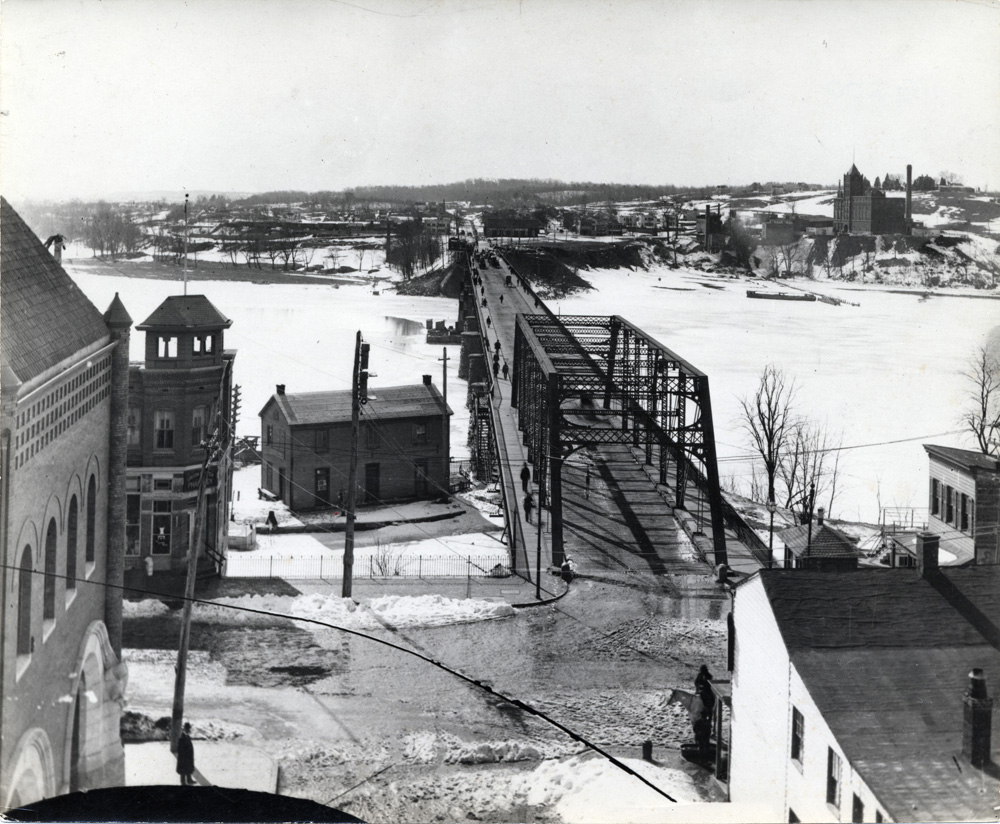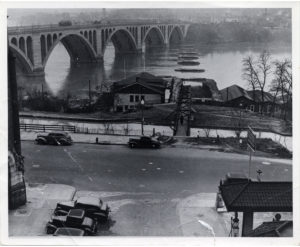Before the Key Bridged spanned the Potomac River from Georgetown to Rosslyn, the Alexandria Aqueduct carried barges on an extension of the C&O Canal from Georgetown to Alexandria (then encompassing Arlington County and the City of Alexandria), to keep the city competitive as a trading center.
NOTE: The following two paragraphs have been edited to correct an error, and add information.
These two photographs were taken approximately forty years apart.
The first photo, c.1900, was taken from Georgetown looking towards Rosslyn. It shows the Aqueduct Bridge (also known as the Potomac or Alexandria Aqueduct), which connected Virginia and Georgetown from 1843 to 1923. The tall building in the upper right corner of the first photo was a brewing company that began as the Consumer Brewing Company (1895 -1902) and then became the Arlington Brewing Company (1902 -1918).
The second image shows the Key Bridge with the last vestiges of the Aqueduct Bridge. Construction on the Aqueduct Bridge began in 1833 at the bequest of the Alexandria Canal, which knew its port would suffer because of the C&O Canal. The bridge took ten years to construct, and in 1868, a second level was added to the bridge to serve as a road between Rosslyn and Georgetown for people and carts.
In 1886, the bridge was closed to canal boats, but the Aqueduct Bridge continued to be used as a bridge for traffic between Georgetown and Rosslyn until 1923, when the Key Bridge opened.
The Aqueduct Bridge's iron superstructure was removed in 1933 by the Depression-era Civil Works Administration, and in 1962 the Army Corps of Engineers removed the tops of seven of the eight stone piers visible in the Key Bridge image. The eighth pier—the one closest to Virginia—was left intact and is visible to this day. You can also still see remnants of the Georgetown abutment near the western base of the Key Bridge.
To see more items like these, or to learn more about Arlington's history, visit the Center for Local History on the first floor of the Central Library.
Do you have a question about this story, or a personal experience to share?
Use this form to send a message to the Center for Local History.
Center For Local History - Blog Post Message Form
Do you have a question about this story, or a personal experience to share? Use this form to send a message to the Center for Local History.
"*" indicates required fields

